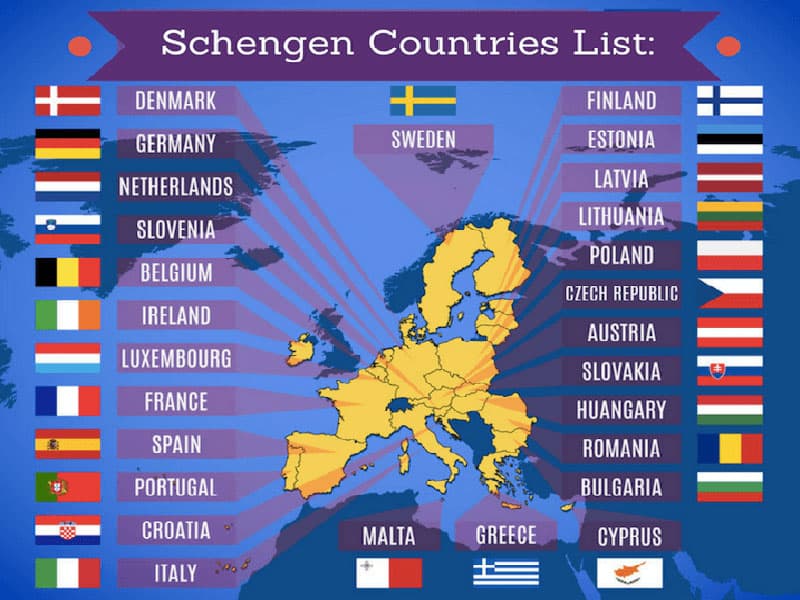
- Home
- --- News
- --- News
Bulgaria and Romania to join Schengen area

The Commission welcomes today’s unanimous decision by the Council to welcome Romania and Bulgaria into the Schengen area, starting with lifting controls at air and sea borders as of March 2024. Their accession will boost travel, trade and tourism and will further consolidate the internal market. Discussions on a further decision to lift controls at land borders will continue in 2024. An enlarged Schengen area will make the EU stronger as a Union, internally and on the global stage.
President von der Leyen said: “Today marks a historic moment for Bulgaria and Romania. And a day of great pride for Romanian and Bulgarian citizens. As of March, they will be able to freely cross internal sea and air borders, without border controls. This is a major step forward for both countries and for the Schengen area as a whole. Congratulations to Bulgaria and Romania: this great achievement is possible thanks to your hard work, commitment and perseverance. Thanks to you the Schengen area will become even stronger to the benefit of all EU citizens.”
Bulgaria and Romania are ready to join the Schengen area. The Commission first confirmed that both Bulgaria and Romania were ready to become part of the Schengen area without internal border controls in 2011. Since then, Bulgaria and Romania have continued to demonstrate that they fulfil the conditions for becoming Schengen members. This was reconfirmed by three fact finding missions at the Bulgarian and Romanian external borders in 2022 and 2023. The Commission also launched pilot projects with Romania and Bulgaria in March 2023 to boost external border management, reinforce cooperation with neighbouring countries and ensure fast asylum and return procedures.
The Schengen area is also ready to welcome Bulgaria and Romania. In the last decade, the EU has worked to reinforce the architecture that protects the area without internal border controls. A series of measures in the field of security, police and judicial cooperation have been introduced to ensure that the EU remains strong against security threats. The Schengen area is now also supported by a new governance model, a new evaluation mechanism and an annual cycle of reporting and monitoring. The joint efforts made in recent years have made Schengen stronger and more resilient.
This ninth enlargement of the Schengen area both confirms and reinforces the mutual trust and unity between Member States on which Schengen is built and will help to advance this essential project. It will make the Union stronger through a reinforced protection of our common external borders and effective police cooperation – more prosperous by eliminating time lost at borders and facilitating people and business contacts – and more attractive by significantly expanding the world’s largest common area without internal border controls.
Next steps
Discussions on a date for a possible lifting of the checks on persons at internal land borders will continue in 2024 and a decision by the Council on this matter is expected to be taken within a reasonable time frame.
To assist Bulgaria and Romania in protecting the external borders of the Union, substantial financial support and Frontex assistance will continue to be provided. At the same time, the pilot projects developed by Bulgaria and Romania at the external borders have proven effective and should be turned into more structural arrangements.
Background
Europe’s Schengen area of free movement is one of its greatest achievements and one that EU citizens cherish most. What started as an intergovernmental project between five Member States in 1985 – France, Germany, Belgium, Netherlands and Luxembourg – has gradually expanded over seven enlargement stages to become what is today the largest area of free movement in the world. The benefits of abolishing internal borders remain as compelling today as they were in 1985.
The Schengen area comprises 27 countries and extends over 4 million square kilometers with a population of almost 420 million people. With Romania and Bulgaria, the Schengen area will grow to 4.5 million square kilometers with a population of 450 million.
The Schengen area is an integral part of the EU’s legal framework. According to the Treaties all EU Member States of the EU need to become, when ready, full members of the Schengen area. This is both a right and an obligation. Both Bulgaria and Romania have proven to have a model track record of implementation. With Romania and Bulgaria, Schengen only becomes stronger. Voluntary fact-finding missions in 2022 in Bulgaria and Romania, and the latest mission in 2023 in Bulgaria only reinforced their readiness.
Source: https://ec.europa.eu
Contact us
VINACOM Vietnam International Investment CorporationAddress : Lot HH3, Alley 89, Le Duc Tho Str., My Dinh2, Nam Tu Liem Dist., Hanoi., Vietnam
Tel : +84.24.3201 7888
Fax: +84.24.3202 7888
Email: contacts@vinacomvietnam.com
Website: http://vinacomvietnam.vn





_44175.jpg)







_97754.jpg)




